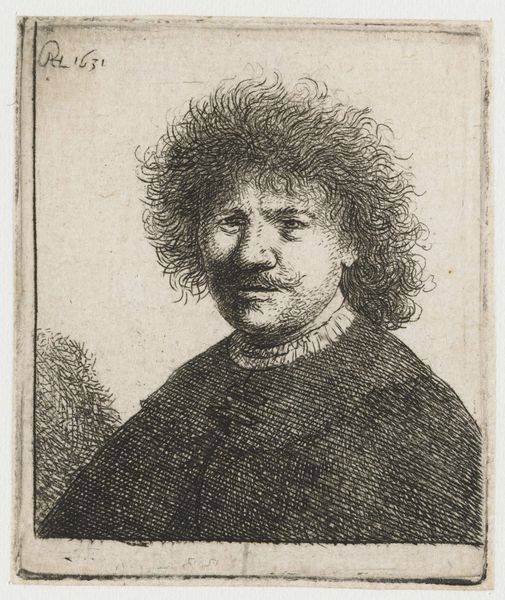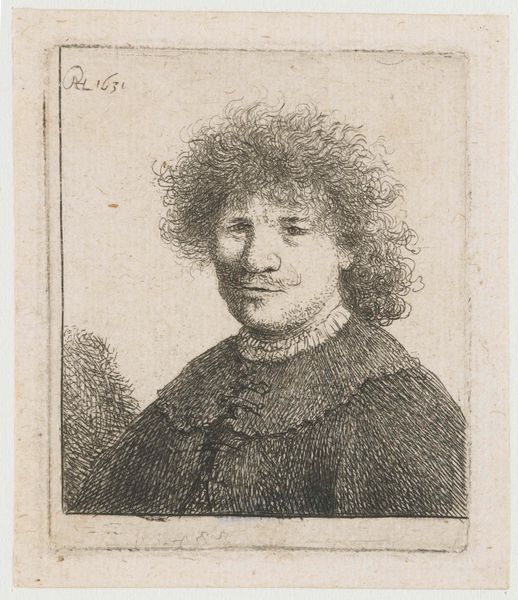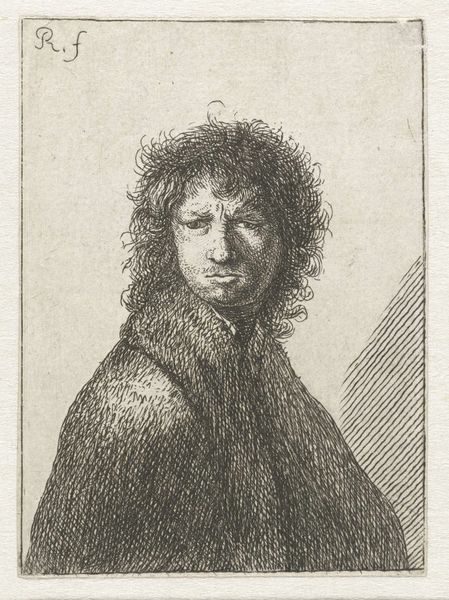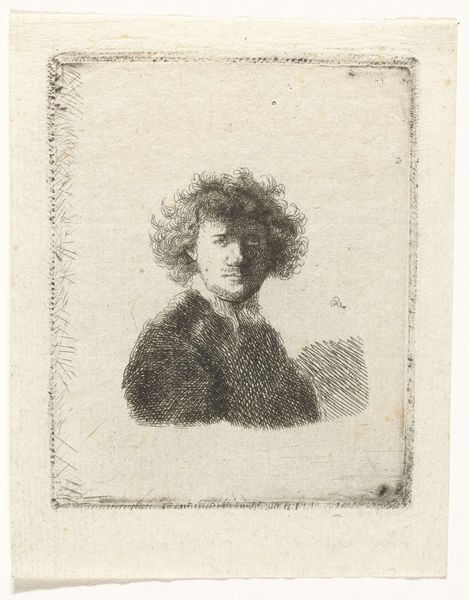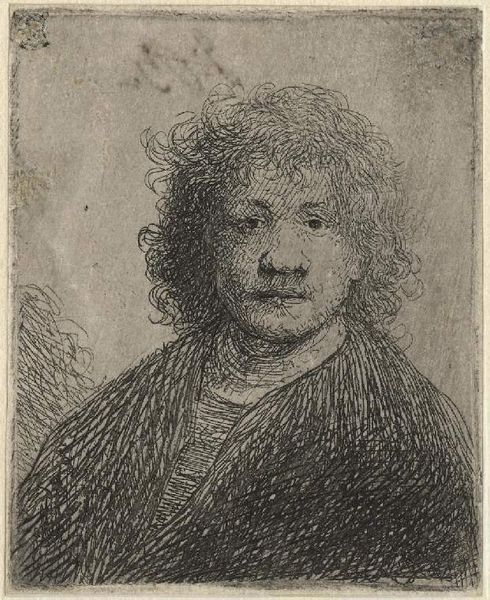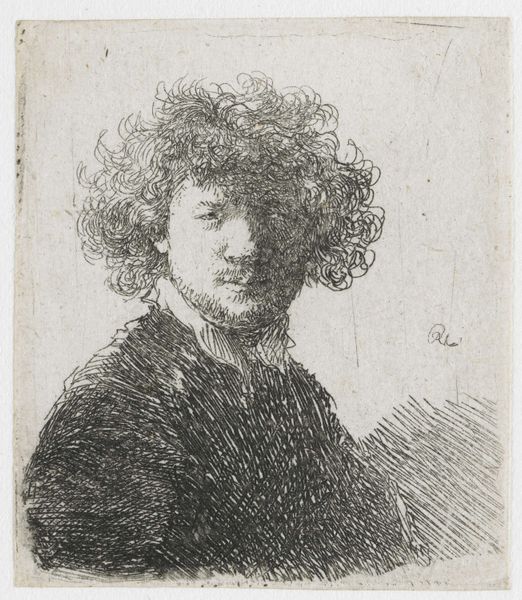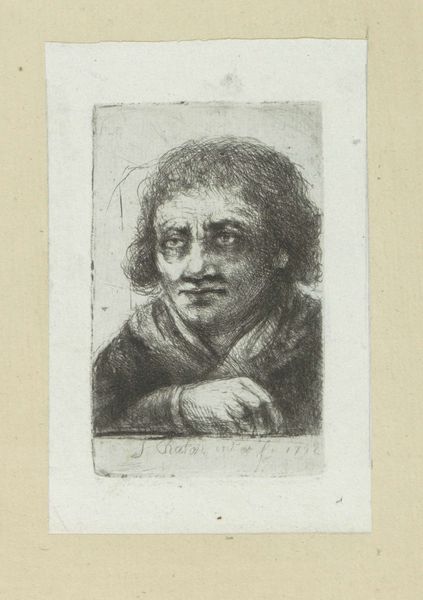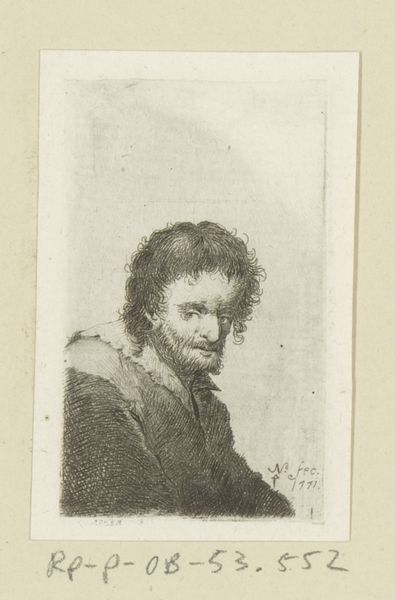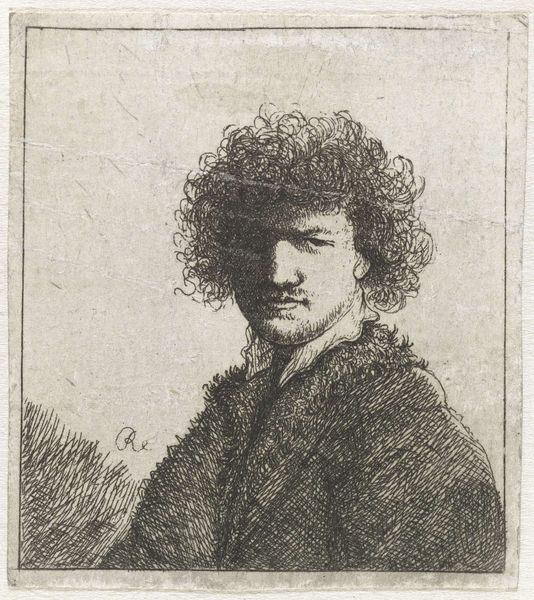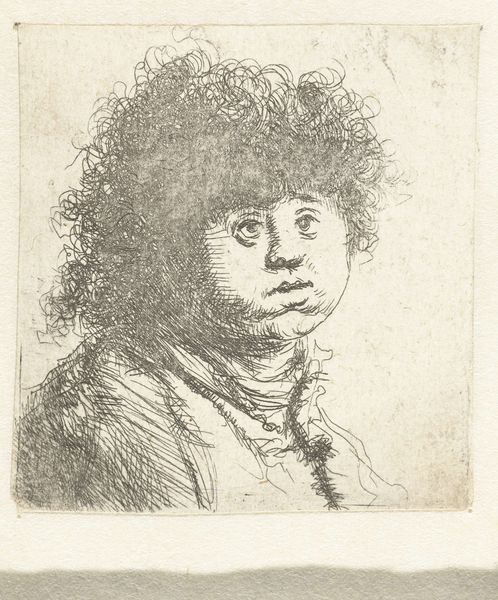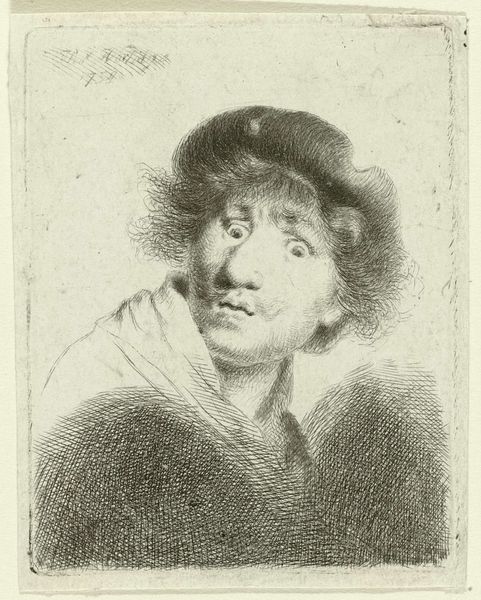
Self-portrait in a cloak with a falling collar: bust 1633 - 1656
0:00
0:00
cornelisidanckerts
Rijksmuseum
drawing, etching
#
portrait
#
drawing
#
self-portrait
#
baroque
#
etching
#
portrait drawing
Dimensions: height 85 mm, width 71 mm
Copyright: Rijks Museum: Open Domain
Editor: Here we have Cornelis Danckerts' "Self-portrait in a cloak with a falling collar: bust," likely created between 1633 and 1656. It's an etching, a technique that gives it such intricate detail, particularly in the hair and the fabric. The overall mood feels a little melancholic, don't you think? How do you interpret this work, considering its time and context? Curator: This piece strikes me as a fascinating glimpse into the construction of artistic identity within 17th-century Dutch society. Consider the self-portrait as a declaration. What does it mean for an artist to present themselves in a particular way, at a time when social roles and status were so rigidly defined? Editor: So, you're suggesting the "cloak" and "falling collar" might be more than just what he was wearing. Curator: Exactly. Think about the subtle subversions within those signifiers. The falling collar, slightly disheveled, hints at a break from strict formality, perhaps signaling the artist's intellectual or creative freedom. What power dynamics were at play in who was represented and how? This was not merely about depicting oneself, but about staking a claim within a complex social landscape. Editor: That's a really interesting point. It’s easy to look at art from the past without considering the very deliberate choices that artists made about their own presentation. Curator: Indeed, by interrogating the artist's intention and the artwork's reception within its historical framework, we can gain deeper insights into its cultural resonance and ongoing relevance today. Editor: I'm starting to think that analyzing this portrait can give us more than just insight into a man’s likeness but also broader questions about personhood. Curator: Precisely! The conversation about historical agency gives it such a broader and very relevant modern meaning.
Comments
No comments
Be the first to comment and join the conversation on the ultimate creative platform.

